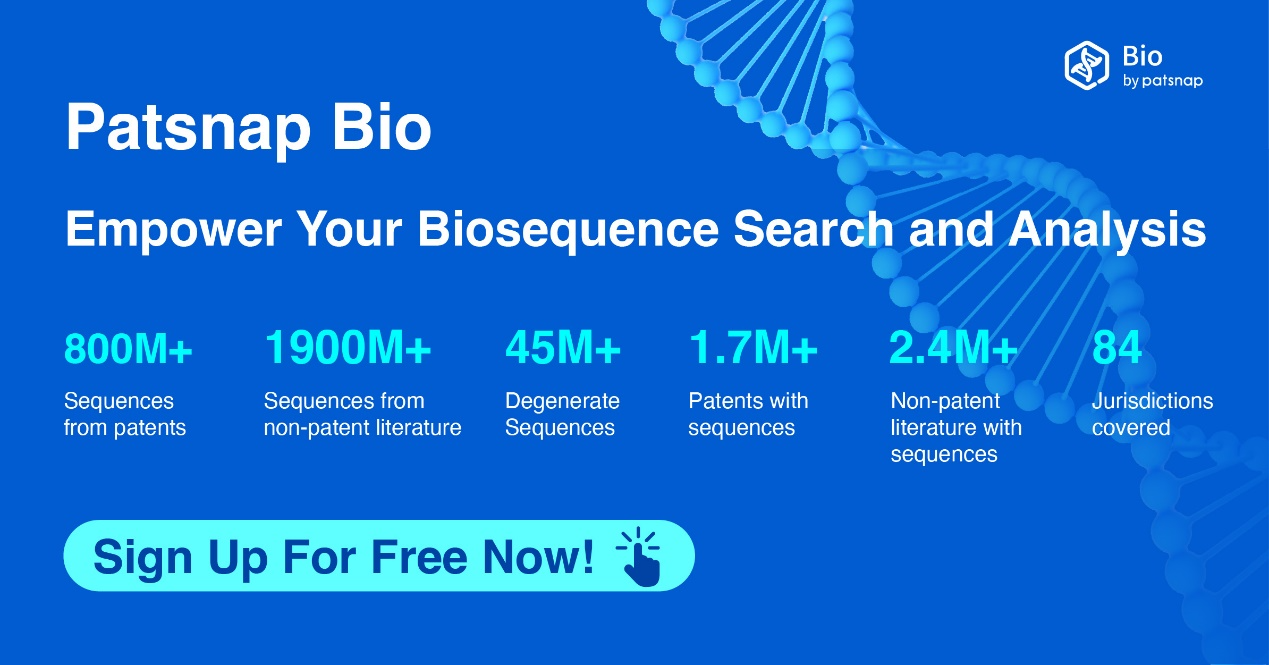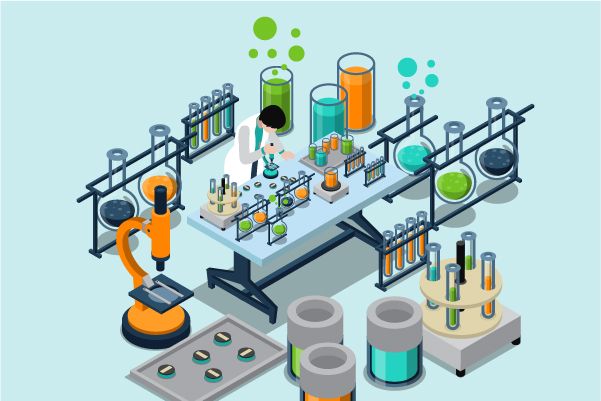Variation Report — A Valuable Tool for Investigating Sequence Mutations within Drug Development
Genomic variations, or sequence mutations, denote alterations witnessed within genetic material which can encompass deoxyribonucleic acid (DNA) or ribonucleic acid (RNA). These modifications primarily include replacements, insertions or deletions of a single base, or more substantial rearrangements or recombinations of genes or genomes. Their role is crucial in the realm of biological research, aiding not only in the understanding of genetic mechanisms and organisms' evolutionary processes but also as a keystone in disease research as well as species identification.
The utilization of the Patsnap Bio Sequence Database is encouraged in order to access and scrutinize the mutation data of biological sequences. The procedures for operation are delineated herein: Initially, the sequence of interest should be entered into the search interface found on the left side of the database's homepage for subsequent examination (Fig 1).
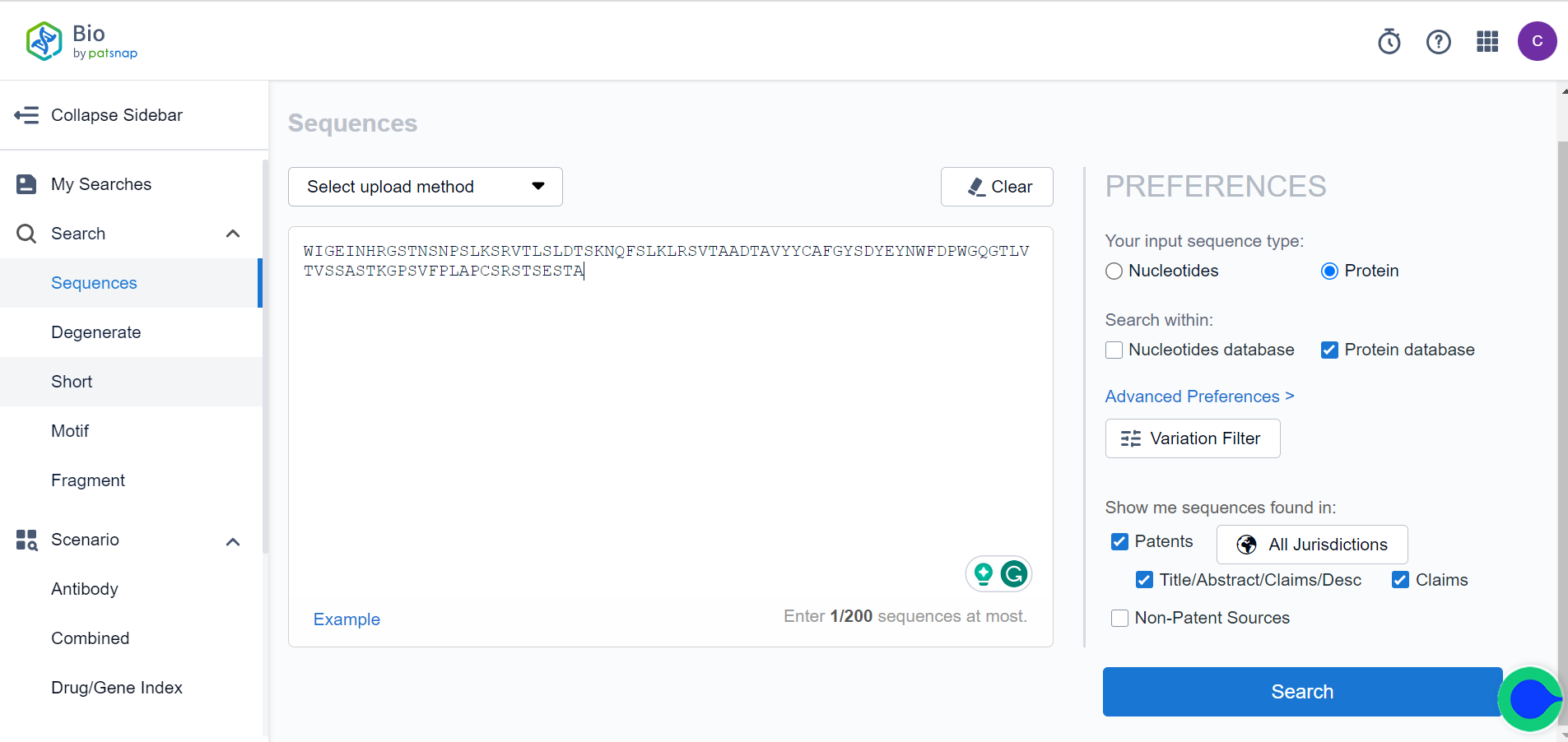
Proceeding with analysis, the subsequent sequence search results page will display a mutation report function at the uppermost area (Fig 2). Upon clicking, a comprehensive sequence variation analysis report can be effortlessly compiled.
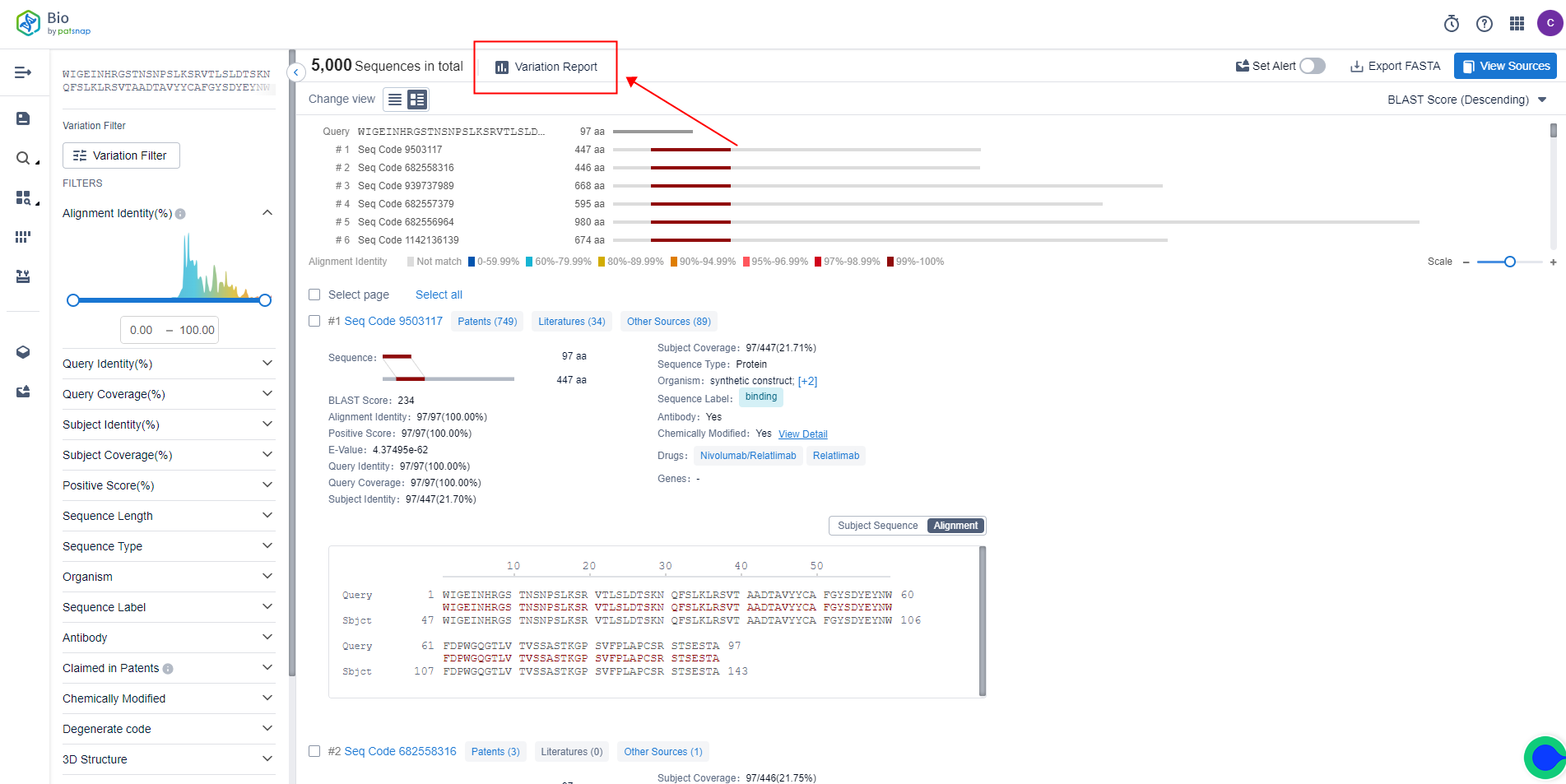
The variation analysis report showcases a heatmap analysis interface (Fig 3). This feature allows you to examine the diversity of mutation types engendered at specific sites of interest and peruse the search results for precise mutations. For further convenience, the report can be exported, saved and scrutinized offline, equipping you with invaluable data for forthcoming sequence modification and analysis.
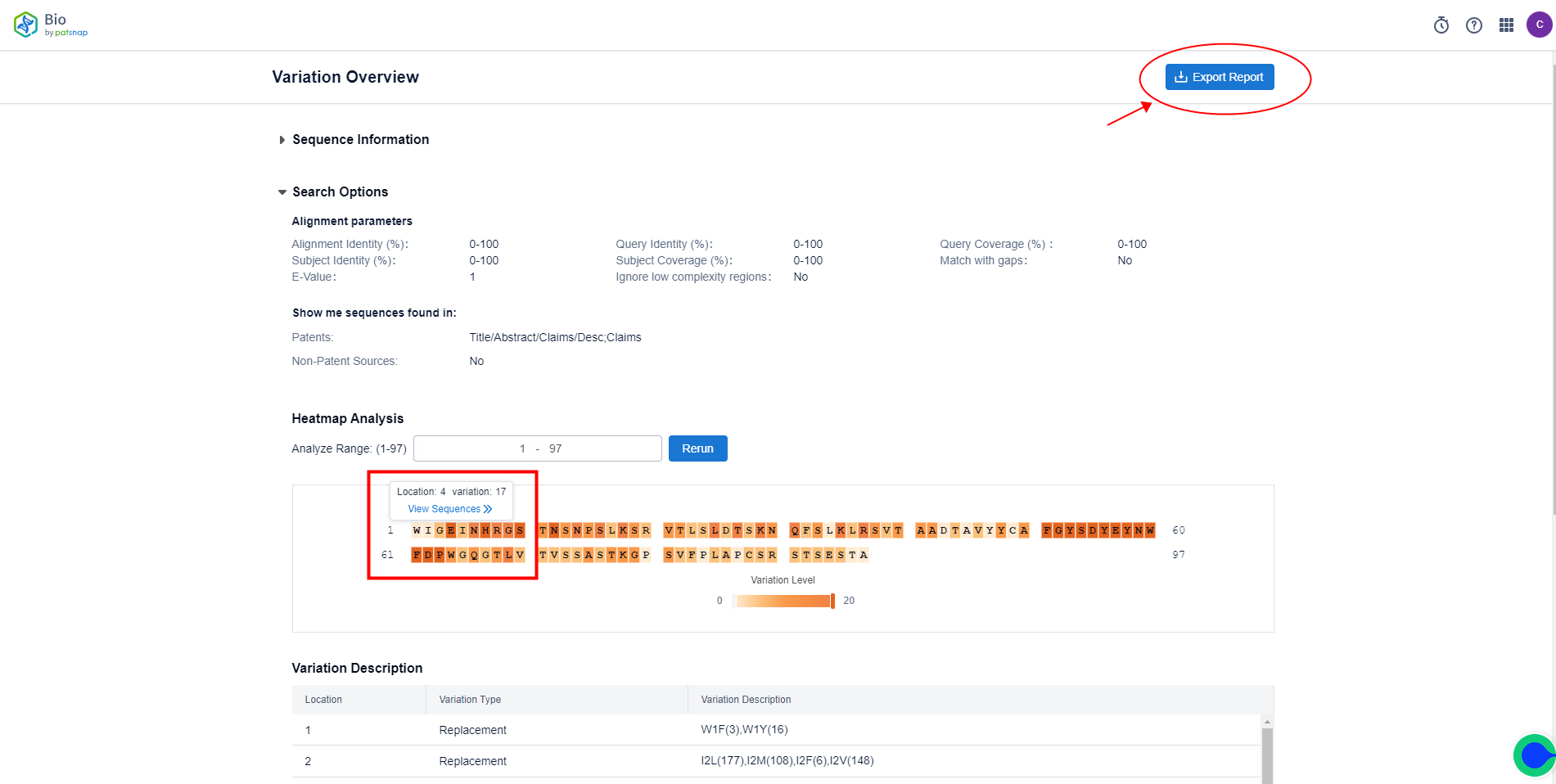
As such, this variation report proves itself to be an instrumental asset in the field of sequence mutation studies, particularly within drug development.
Patsnap Bio represents the most extensive sequence search platform within the Patsnap database framework. The platform incorporates Artificial Intelligence (AI) and human-curated data for comprehensive protein and nucleotide sequence data processing from worldwide patents, biological periodicals, and public repositories. Crucial biological sequences receive manual annotation, and overlooked structural modifications are highlighted for enhanced sequence retrieval efficiency.
Free registration is currently available to utilize the Bio biological sequence database: https://bio-patsnap-com.libproxy1.nus.edu.sg. Act now to expedite your antibody sequence alignment tasks.
